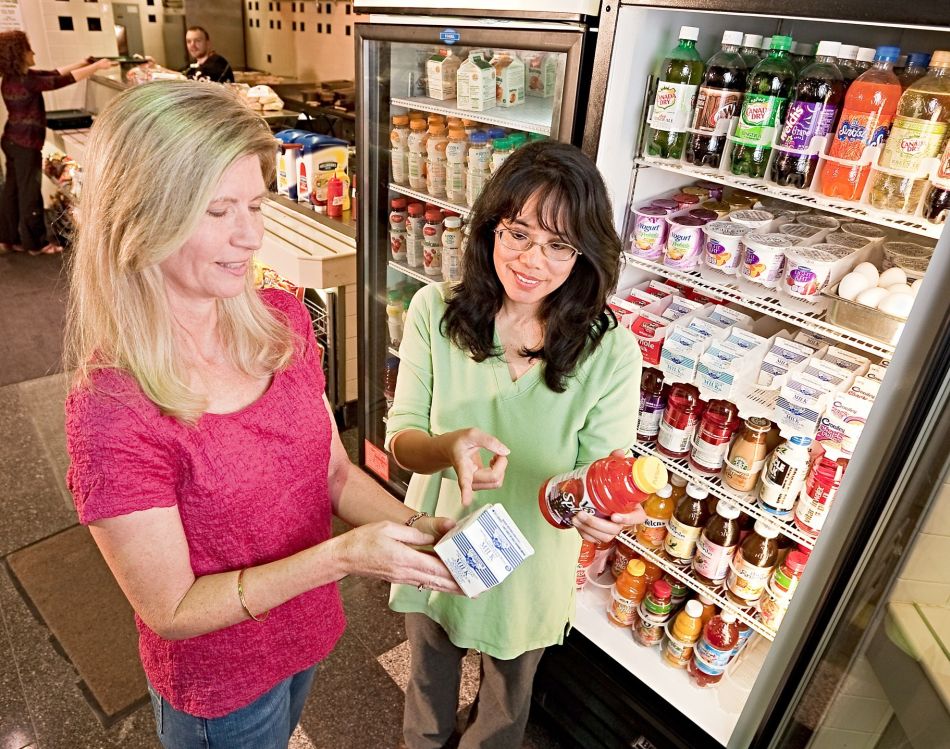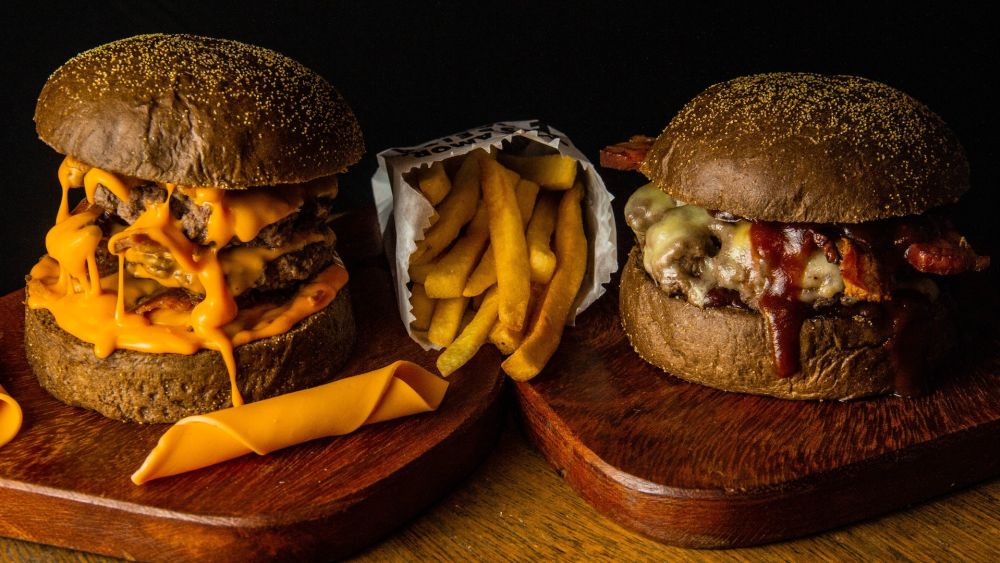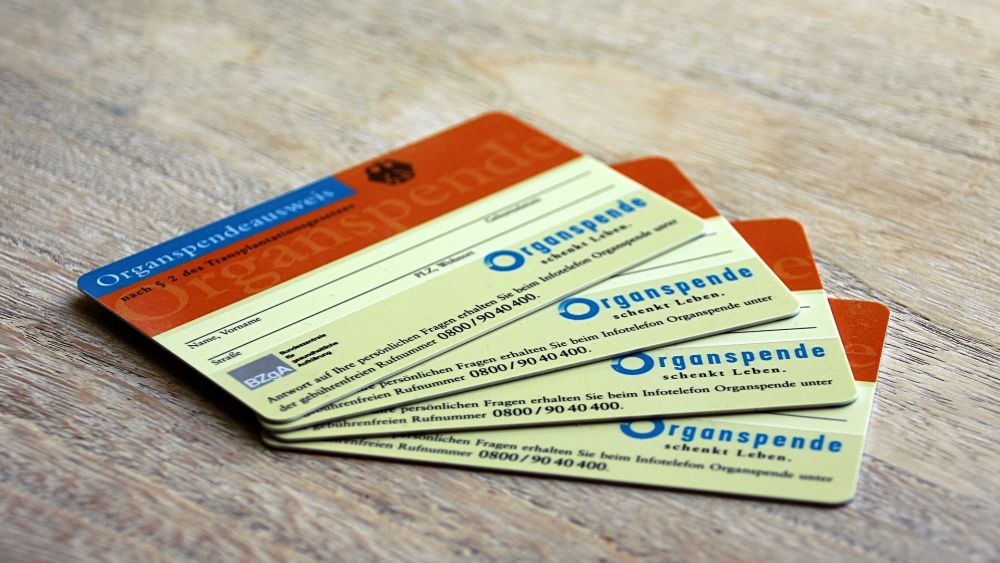Want Food Safety? Keep It Simple
Greggory Moore | Moore Lowdown

image by: U.S. Department of Agriculture
They say there are no guarantees in life. Unfortunately, that goes for food safety. But there are simple ways we can minimize our risks.
Prior to the 20th century, no-one conceived of the need for nutrition labeling. Milk was milk. Fish was fish. A cake was sugar, flour, butter, eggs, and little else. There were salt and spices, but for the most part you knew what you were eating just by looking at it.
Okay, things weren't quite that simple. But food was food, until the modern world brought its modern problems, like unethical entrepreneurs who realized they could make more money by making misleading or false claims for their food products, such as misidentifying the ingredients or failing to acknowledge additives.
Although the U.S. government has enacted more and more food-labeling requirements—ingredients list, nutritional content, whether the food items was made or packaged in a facility that also processes potentially serious allergens (e.g., nuts)—a higher percentage than ever of edibles for sale in your town may be unsafe to some degree due to just how many additives, chemicals, and unnatural processes are involved in their manufacture.
A paragon of this problem that made headlines in 2014 was the revelation that bread sold as part of Subway sandwiches contained azodicarbonamide, a chemical compound principally used in the formation of foamed plastics (think yoga mats) but that the Food and Drug Administration (FDA) notes is "approved for use as a whitening agent in cereal flour and as a dough conditioner in bread baking," despite the fact that in 2005 the European Union banned azodicarbonamide for use not only in food products themselves but even in plastic products whose intended use has them coming into contact with food.
Whether azodicarbonamide is safe for human consumption is an open question. The EU ban was motivated by the inability by scientists "to conclude whether SEM [a chemical into which azodicarbonamide decomposes upon being heated to a certain temperature] poses a carcinogenic risk to humans." But the fact that Subway, despite standing by azodicarbonamide's safety, bowed to public pressure and removed it from Subway's bread-making process points up just how inessential are many of the ingredients found in today's foodstuffs.
While it is the safety and not the necessity of an ingredient that matters most, one sure thing about all food additives is that they are not tried and true evolutionarily vis-à-vis human consumption. From thousands of years of ingestive experience (not to mention relatively recent scientific research based on that experience), we have a pretty good idea with flour and salt affects human body. We have no such foundation to inform our consumption of azodicarbonamide or any of the many inorganic preservatives, food colorings, etc., that today's Americans consume in mass quantities.
What we do know from scientific study is that many such additives have proven dangerous even along the short time span in which they have been studied. Red Dye No. 2 is a classic case in point. After health issues were linked to certain food-coloring agents in the 1950s, the FDA re-tested all such additives on the market and concluded that Red Dye No. 2 was among those "generally recognized as safe." But 20 years later, in the face of scientific evidence linking the dye to tumor growth, the FDA banned Red Dye No. 2, which Time magazine has since included on its list of the world's "50 Worst Inventions."
While this 20th-century issue dogs us unabated today, a related concern created in the current century is our ability and willingness to tinker with the DNA of what we eat. Because the technology is so new, we simply have no way of knowing whether genetically modified organisms (GMOs) are generally safe for human consumption, whether some are and some are not, or whether it's a bad practice all around to consume foods whose genetic evolution has come about by non-natural means.
But because there is big money to be made, big business hasn't stayed the spread of GMOs in deference to safety. It is generally estimated that somewhere around 70% of processed foods on U.S. supermarket shelves contains GMOs (the Center for Food Safety, for example, puts the figure at about 75%). And as the Union of Concerned Scientists puts it, "[N]ot enough is known [about GMOs. R]esearch on the effects of specific genes has been limited—and tightly controlled by the industry. But we do know of ways in which genetically engineered crops could cause health problems."
Nonetheless, the federal government is midway through passing legislation that would prohibit states from forcing states requiring manufacturers to identify their products as containing GMOs. Not that any state currently has such a law in place. (In July, Vermont is slated become the first state to enact such a requirement.)
Now comes a new GMO that may be coming to a market near you: AquAdvantage Salmon. In short, Aqua Bounty Technologies has spliced a gene from the ocean pout into salmon so that the latter can grow faster. Despite the newness of this technology, the FDA claims it has undertaken "exhaustive and rigorous scientific review [and] arrived at the decision that AquAdvantage salmon is as safe to eat as any non-genetically engineered (GE) Atlantic salmon." And although it is within the purview of the FDA to require manufacturers to label AquAdvantage Salmon as genetically modified, the FDA is not doing so.
So how best to ensure that the food you eat is safe? Growing your own is, of course, the best you can do, because that is the only way you can be more or less certain of all that has transpired at every step in the cultivation of that plant or animal.
For most of us, however, growing our own—especially enough to have the sort of dietary variety we are accustomed to—ranges from impractical to impossible. The next best thing, then, is to obtain as much food as possible from local producers, particularly those certified as organic and/or whose farms, orchards, etc., we can visit. The fewer steps between the cultivation and consumption of your meal, the fewer chances there are for something you want to avoid going down your gullet.
For those of us who feel compelled at to rely at least partly on what we can obtain in supermarkets, a point made by Michael Pollan in his In Defense of Food is well taken: do most of your shopping on the perimeter. This is where you find perishable foods, such as fruits and vegetables. As Pollan notes, this is the "quieter" section of the store, meaning foods that don't have extensive—or even any—labeling. Spinach, oranges, etc., don't need labels because you know exactly what you're getting: spinach, oranges, etc.
Quietness is a good guiding principle when you feel driven to peruse the supermarket's inner aisles. With a little bit of effort, you can still find mass-marketed food products that don't contain anything with real cause for concern. This author's favorite example is the humble Triscuit, which, as Nabisco proudly proclaims, consists of only three ingredients: whole-grain wheat, vegetable oil (soybean or canola oil), and sea salt.
So keep it simple. When it comes to your own safety, the best entity to rely on is you. The fewer variables there are, the safer you're likely to be.
About the Author:
Except for a four-month sojourn in Comoros (a small island nation near the northwest of Madagascar), Greggory Moore has lived his entire life in Southern California. Currently he resides in Long Beach, CA, where he engages in a variety of activities, including playing in the band MOVE, performing as a member of RIOTstage, and, of course, writing.
His work has appeared in the Los Angeles Times, OC Weekly, Daily Kos, the Long Beach Post, Random Lengths News, The District Weekly, GreaterLongBeach.com, and a variety of academic and literary journals. HIs first novel, The Use of Regret, was published in 2011, and he is currently at work on his follow-up. For more information: greggorymoore.com

Introducing Stitches!
Your Path to Meaningful Connections in the World of Health and Medicine
Connect, Collaborate, and Engage!
Coming Soon - Stitches, the innovative chat app from the creators of HWN. Join meaningful conversations on health and medical topics. Share text, images, and videos seamlessly. Connect directly within HWN's topic pages and articles.
















